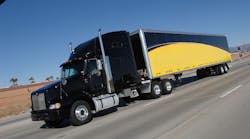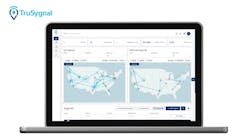ORLANDO, FL. Having survived the Great Recession, trucking is now experiencing the Great OK, according to Kenneth Vieth III, president and sr. analyst of ACT Research.
The active population of heavy-duty tractors today is at 1.36 million, the same level as in 2003 despite GDP growth of 20% over that period, he said at a panel discussion on the economy during the American Trucking Assns.’ annual management meeting. With fleets resisting adding additional capacity, new Class 8 truck sales have been averaging 190,000 a year for the last 36 months, “which has not been great, but has been OK,” Vieth said.
With the average age of the U.S. tractor fleet remaining at an all-time high of 9.8 years since 2010, Vieth added that U.S. retail truck sales could see some growth in the second half of 2014 if GDP continues to grow even at the current slow pace.
Addressing the outlook for the general economy, Mark Vitner, managing director and chief economist at Wells Fargo, predicted no rapid growth in GDP over the next 18 months or so, although “we see 2014 being a little bit better than 2013.”
Echoing the Great OK sentiments, ATA chief economist Bob Costello said that while overall freight has been showing gains, that growth has been “very choppy, much like the overall economy.”
Turning to truck freight specifically, Costello said ATA’s trucking tonnage index continues to rise, mostly because recovery in sectors like energy and construction are outpacing the recovery in the general economy. …so that heavy freight is really driving tonnage even if the number of loads is growing slower.”
However with new tonnage index due to be released on Tuesday, Costello said: “I can’t tell what it is, but just expect it to be pretty good.”
Despite the current slow-growth scenario, ATA’s chief economist remains positive about trucking’s longer term prospects. “At the moment, fleets are expanding slowly, which means that once we see more consistent, accelerated economic growth – think 2.75% or 3% increases in GDP on a regular basis – it will eventually cause very tight capacity.”
But until the overall economy does begin gathering some steam, “margins will be under pressure because the costs of fuel, driver recruitment and retention and equipment will rise faster than freight rates,” he said. “However, once capacity does tighten, carriers will see improvement on the bottom line.”



